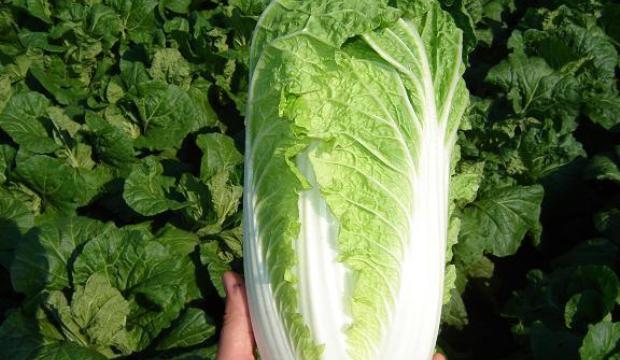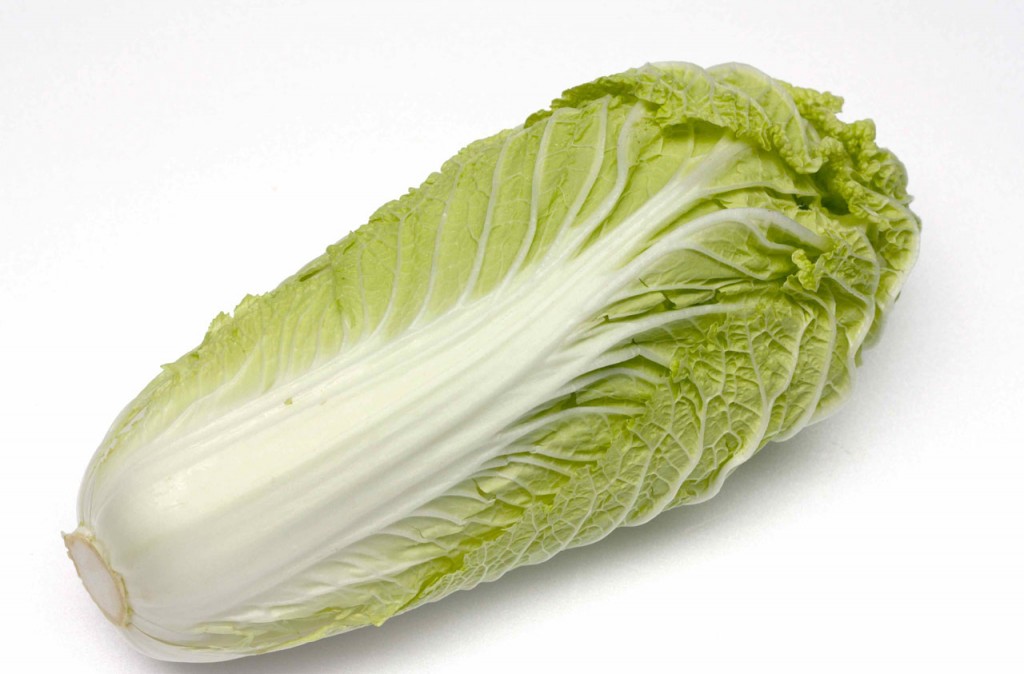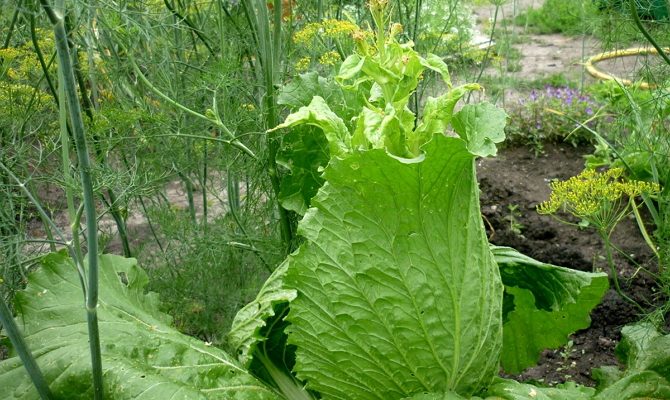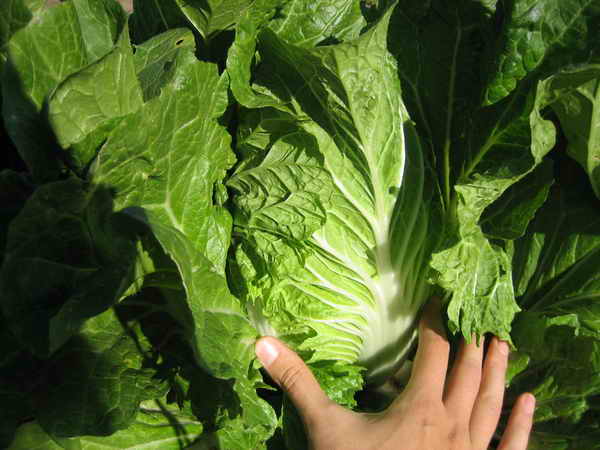Secrets of the care and cultivation of Chinese cabbage
Content
Seedless way
Sowing seeds in a permanent place of growth is convenient and in the case of Chinese cabbage, it is correct. The seedless planting method has shown itself to be more productive, since the seedlings of this culture do not always root well in a new place, even with sufficient care. Most often, seeds are sown in a ribbon-line method. The distance between the tapes must be at least 50 centimeters.
 You can also plant several seeds in the holes, which are pulled out at a distance of 35-40 centimeters. In each of these cases, further care involves thinning. You need to leave the tallest plants. The sowing depth is 1-2 centimeters. If you are using a greenhouse for growing, then you do not need to take any additional protection measures. In open field conditions, it will not hurt to cover crops with plastic wrap to create a greenhouse effect. Depending on the weather, the first shoots will appear in 4-10 days.
You can also plant several seeds in the holes, which are pulled out at a distance of 35-40 centimeters. In each of these cases, further care involves thinning. You need to leave the tallest plants. The sowing depth is 1-2 centimeters. If you are using a greenhouse for growing, then you do not need to take any additional protection measures. In open field conditions, it will not hurt to cover crops with plastic wrap to create a greenhouse effect. Depending on the weather, the first shoots will appear in 4-10 days.
Seedling
The seedling method of growing Peking is more laborious, but this is the preferred method for residents of the northern regions or if you want to get an earlier harvest. Seedling seeds are sown around the end of March. Individual pots or peat tablets are best suited for this mission. The culture does not react well to the pick and is hard to transfer the transplant.
For growing seedlings, it is best to prepare a light and loose soil from humus and coconut substrate. Seeds are planted to a depth of no more than 1 centimeter. After moistening the landing, it is removed to a dark and warm place. The first shoots, as a rule, appear after 3-4 days. After the leaves appear, the pots are brought out into the light. Seedling care includes moderate watering. Before planting, seedlings should not be watered for 3-4 days. It is necessary to transfer plants to open ground or an unheated greenhouse when they have 4-5 leaves.
Landing dates
The time of planting seeds or seedlings directly depends on how good the harvest you get. It is best to sow Peking cabbage between April 15 and 20 and July 20 to August 10. In warm regions, cultivation can be started from the end of March. The main thing is to be sure that the night frosts are gone. The interval between April 20 and July 20 is considered unfavorable for planting this crop, since the problem of flowering and arrows arises due to the long daylight hours.
With the correct planting technology and sufficient care, the crop can be harvested in about 45-50 days. Peking cabbage is quite cold hardy. The seeds will be able to germinate even at + 4 ° C. Although active growth is observed at stable + 15- + 20 ° С. When growing a vegetable in a greenhouse, it is important to take into account this temperature regime. With lower or excessively high readings on the thermometer, there is no need to expect good harvests.
Video "Growing Peking Cabbage"
Care
There are 3 main components of care that promote the growth of cabbage - moisture, light and coolness. It is important to understand that only adult plants can survive frosts, but for young seedlings, dramatic drops in temperature are destructive. If you live in the northern regions, it is better to plan sowing in August, and use a greenhouse for spring planting.
During cultivation, it is useful to use covering tissue materials. With their help, you can protect the beds from excessive sunlight and pests. In 12-15 days after planting, it is necessary to mulch the ridges. The technology of covering the soil with sawdust or straw prevents premature loss of moisture and slows down the growth of weeds. Mulching is recommended both in open ground and in greenhouses.
Watering should be moderate, on average 1 time per week. Make sure that excess water does not stagnate in the area, otherwise the roots may begin to rot. During the cultivation of Peking cabbage, it is necessary to carry out top dressing. After sprouting or 2 weeks after planting seedlings, the culture is treated with a solution of mullein (1:10) or chicken droppings (1:20). Before sowing, you can treat the soil with urea and superphosphate. Also care should include
Pest control
The juicy and fresh leaves of Peking are popular not only for us, but also for all kinds of small garden pests. Cruciferous fleas and slugs occupy the first place in terms of danger. It is almost impossible to fight these parasites if they have already reached the vegetable. At a fast rate of reproduction, they destroy cabbage after cabbage, leaving only perforated leaves.
Therefore, experienced specialists recommend acting on the prevention and including in the complex care special treatment of plantings and the manufacture of shelters.
First of all, you need to prevent possible contact between flea beetles and cabbage. The easiest way to hide the plants is in a greenhouse. It is much easier to control the appearance of any living creatures there, and insects can be quickly removed. If you do not have a greenhouse and Peking cabbage is grown outdoors, cover the beds with a non-woven cloth. Such a simple technology will allow you to take uninvited guests aside.
In order for the Peking to have time to get stronger and grow without flea attacks, observe the planting dates. It is best to plan planting in early spring or late summer. Then, in the first case, there will be no insects yet, and in the second - there will be no more. Good results are obtained by dusting the beds with wood ash immediately after planting. Also consider the cabbage precursors in the row. If in the previous season cruciferous plants (radishes, mustard, cabbage) grew on this site, it is likely that dozens of pupae are waiting in the ground.
You can also try to fool a flea by planting Chinese cabbage mixed with tomatoes, potatoes, garlic, or onions. It is possible to deal with existing flea beetles only with professional means such as Aktar, Aktellik, Inta-Vira. Spraying with these preparations is carried out no later than 1 month before harvesting. Garden slugs love this vegetable no less. They appear on rainy and cloudy days, so if the season turned out to be wet, then you need to carefully monitor the planting.
Slugs are used to hiding in dark and damp places. In order to collect these pests in one place, you can spread wooden boards or burdock leaves between the rows. Slugs will surely take advantage of the proposed conditions and then you will only have to manually harvest the "crop" of pests. You can also ward off slugs using special treatment. Mix a 1/2 quart can of wood ash with 1 tablespoon of dry mustard, 2 tablespoons of salt, and 2 tablespoons of hot ground pepper. Sprinkle the mixture on the beds and aisles.
Video "Peking cabbage"
Everything you wanted to know about this culture can be found in the following video.




